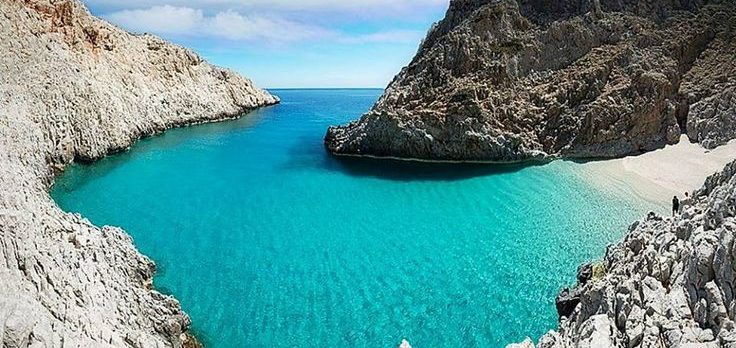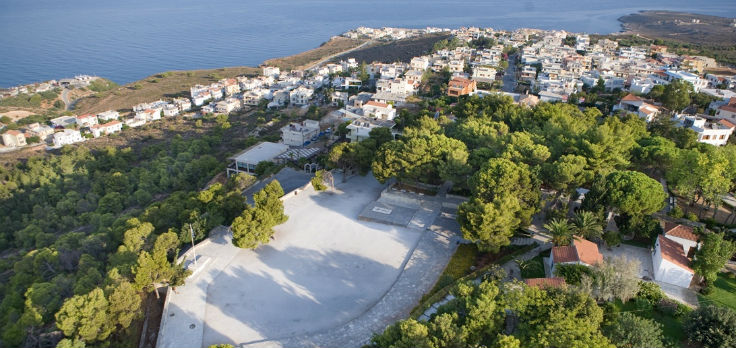GET INSPIRED
LOCATION & ACTIVITIES
Local and foreign tourists visit extensively the area of Akrotiri to admire the historical monuments, Christian monasteries and the fine beaches. Villas Tzivaeri and Marathoula are the right place for you! We invite you to visit us and to get inspired from the beautiful island and our traditions and feel how the old and modern coexist. A number of tours, activities and destinations will be given to you to make your stay memorable.
The organized staff of the Villas will undertake the organization of the activities:cycling, hiking, jet skiing, mountain biking, mountain climbing, rafting, sailing, diving, snorkelling, surf fishing, surfing, swimming, water skiing, water tubing, wind-surfing, private cruise tour of the peninsula, visit wineries
From Akrotiri you can visit the beaches of the broader area of Chania. Specifically, Falasarna, Balos, Elafonisi and Paleochora. Those beaches are considered among the best in Greece and all over the world!

Seitan Limania
The beach of Agiou Stefanou is located near the position of Seitan Limania, 20km northeast of Chania and 2km east of the village Chordaki, at the east side of Akrotiri Cape. The wider area is named Seitan Limania, after the wild landscape, the steep cliffs and the strong sea streams which are very dangerous. Here are situated three parallel narrow coves, well protected from the waves. In the middle of this wild landscape, it is not expected to see something tranquil. However, in the northern cove a tiny fantastic beach is shaped, with deep azure waters, namely the beach of Stefanou. The beach has fine pebbles and sand, transferred there from the nearby quarry through the canyon Diplohahalo. On the right and the left sides of the cove, huge marble rocks are standing high to protect the beach from the bad weather. It is quite unknown to most people, even the residents of Chania. This paradise is mostly known to the lucky residents of Chordaki village, who struggle to keep it safe, beautiful and clean.

Stavros
Stavros is a seaside village located at the northeast of Chania, at the Cape of Akrotiri. One characteristic feature of the area is the very steep camel-shaped mountain rising opposite the harbor of Stavros. The mountain is famous, because of the filmed scenes for the film “Zorba the Greek”, where Anthony Quinn danced the famous Sirtaki Dance in 1964. The two beaches of the area have contributed to the development of the area. A circular bay is formed, fully protected by winds blowing in the region. The lagoon-like bay has marvelous white sand and shallow turquoise waters. The contrast of the wild mountain with the peaceful beach in the foreground makes Stavros a unique place for swimming. As expected, the beach is very well organized and provides all possible services. At the peninsula dividing the two beaches of Stavros, you can see the remains of the ancient quarry, used for extracting limestone for building the Walls of Chania during the Venetian Era (13rd-17th century). In Stavros you shall find many more options rather than accommodation and restaurants, such as mini markets, shops, cafes etc. Moreover, there are bus services from Chania city.

Kalathas
The seaside village of Kalathas is located 12km northeast of Chania, in the heart of a large natural bay on the Akrotiri peninsula, which is open to the
north winds. Kalathas is a relatively modern village, which has been inhabited by residents of Chania who wanted to live away from the city center. The
beach in front of the village is beautiful, with fine sand and shallow crystal clear water. Opposite Kalathas, there is a small island which you can easily reach swimming. Next to the beach there are several palm trees that give an exotic tone to the landscape. Moreover, the beach is very well organized with umbrellas, water sports, restaurants, hotels, mini markets, etc. West of the main bay, beyond the rocky end, there is a secluded sandy bay. This is not organized and is ideal for those who do not like crowded places.

Chania City
One of your days, it’s worth taking the tour in Chania city center. You can also visit the old Venetian town of Chania, with its lively nightlife
during summer and winter time. Inside the walls of the Venetian Fortress, exactly in front of the Old Venetian Harbor’s sea, it faces directly at the impressive Egyptian Chania Lighthouse and the Mosque of Kioutsouk Hassan (Hassan Pascha Mosque/Giali Tzamisi). The Maritime Museum of Crete is located on the western side of the port, whilst reaching the Archaeological Museum takes you less than 5 minutes from the city centre. Other attractions nearby are the Cathedral of Virgin Mary, the Folklore Museum of Chania, the Church of Saint Nikolaos and many more that you will explore through your walk in the beautiful and romantic stone-built alleys, among the architecturally impressive buildings of Chania Old Town. Chania Town is ideal for shopping from the numerous local shops. Discover unique handicrafts from local artists, and impress with your choices. Do not omit a visit to the Agora Marketplace where you can find fresh local products of top quality.

Tombs of Venizelos
Specifically, on the Akrotiri peninsula, one of the most popular spots offering a panoramic view of Chania, are the Tombs of Venizelos, a few kilometers
east of the city, on the road to Akrotiri and the airport. Here are the tombs of the famous Greek politician Eleftherios Venizelos and his son Sophocles Venizelos and the small church of Prophet Elias. Around the tombs a small pretty park is formed and the view of Chania city is unobstructed. Also, in the same place is the sacred, historical church of Prophet Elias. The building dates to the early 16th century, with Venetian style features. If you ever visit the tombs of the Venizelos to see Chania from above, you can enjoy a drink or coffee in a neighboring cafe that offers an extremely lovely view.

Monastery of Agia Triada
Continuing to the northeast of the Akrotiri Peninsula, you will find the Monastery of Agia Triada or Monastery Tzagarolon, as it is well known, one of the most impressive monasteries you will ever see in Crete. Turks renamed it “Selvili Manastir”, meaning the Monastery with cypresses – probably due to the roadway full with cypresses that leads to the Monastery. It is worth visiting the church and the complex of the Monastery and, also, to see the large woodcuts and images hosted in the museum of the Abbey. The collection is impressive and makes the visitor wonder about the size and value of much older relics completely destroyed by the Turks during the revolution of 1821. In recent years the Monastery of Agia Triada performs systematic biological olive crops and vineyards and produces fine wine, raki, oil, honey, vinegar and olive oil soap.

Gouverneto Monastery
You can combine your visit with the Gouverneto Monastery located a few kilometers away. The Gouverneto Monastery is one of the oldest monasteries in Crete, as it was built in 1537. The main church of the monastery is dedicated to Our Lady that is why the Gouverneto Monastery has named Lady of the Angels. Very interesting and impressively is the sculpted monsters that adorn the facade of the church. The style is also quite unusual with Venetian influences from the Renaissance and Baroque.

St John the Hermit
By the church, there is a chapel, dedicated to the founder of the Monastery, Saint John, the Hermit, whose cave is located inside Avlaki Gorge. The path is easy, but the return is tedious for the warm summer days. Prefer to walk the gorge either early morning or late in the afternoon. Approximately 20 minutes from the monastery you will find the famous cave Arkoudospilios. Continue to descend until you will reach the famous Catholic monastery with the church of St John the Hermit. If you continue for 10 more minutes you will arrive in a tiny creek, once was used as a port. The water is turquoise and you could take a refreshing swim before you start to ascend back to Gouverneto Monastery, if not strictly prohibited by the monks.


